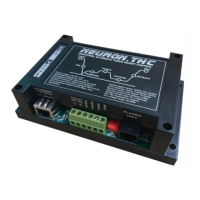USER MANUAL
Common cutting faults
1. Work cable connection on the cutting table is not making good
contact.
2. Torch-to-work distance is too high.
3. The surface of the workpiece is rusty, oiled, or painted.
Failed to completely pierce
the workpiece and there is
excessive sparking on top of
the workpiece.
1. Current is set too low (check Cut chart information).
2. Cut speed is too high (check Cut chart information).
3. Torch parts are worn (change consumable parts).
4. Metal being cut is too thick.
5. The surface of the workpiece is rusty, oiled, or painted.
6. Pierce Delay is set too low.
Dross forms on the bottom
of the cut.
1. Cutting speed is not correct (check Cut chart information).
2. Arc current is set too low (check Cut chart information).
3. Torch parts are worn (change consumable parts).
1. Wrong direction of machine travel. The high-quality side is
commonly on the
right with respect to the forward motion of the torch.
2. Torch-to-work distance is not correct (check Cut chart
information).
3. Cutting speed is not correct (check Cut chart information).
4. Arc current is not correct (check Cut chart information).
5. Damaged consumable parts.
6. The torch is not mounted perpendicular to the workpiece.
7. Damaged torch.
1. Arc current, arc voltage, travel speed, motion delay, gas flow
rates, or initial torch height was not set as specified in the cut
charts.
2. Attempting to cut highly magnetic metal workpiece, such as
one with a high nickel content, will shorten consumable life. Long
consumable life is difficult to achieve when cutting a workpiece
that is magnetized or becomes magnetized easily.
3. Beginning or ending the cut off the surface of the workpiece.
To achieve consumable long life, all cuts must begin and end on
the surface of the workpiece.
The Kerf value is set incorrectly.

